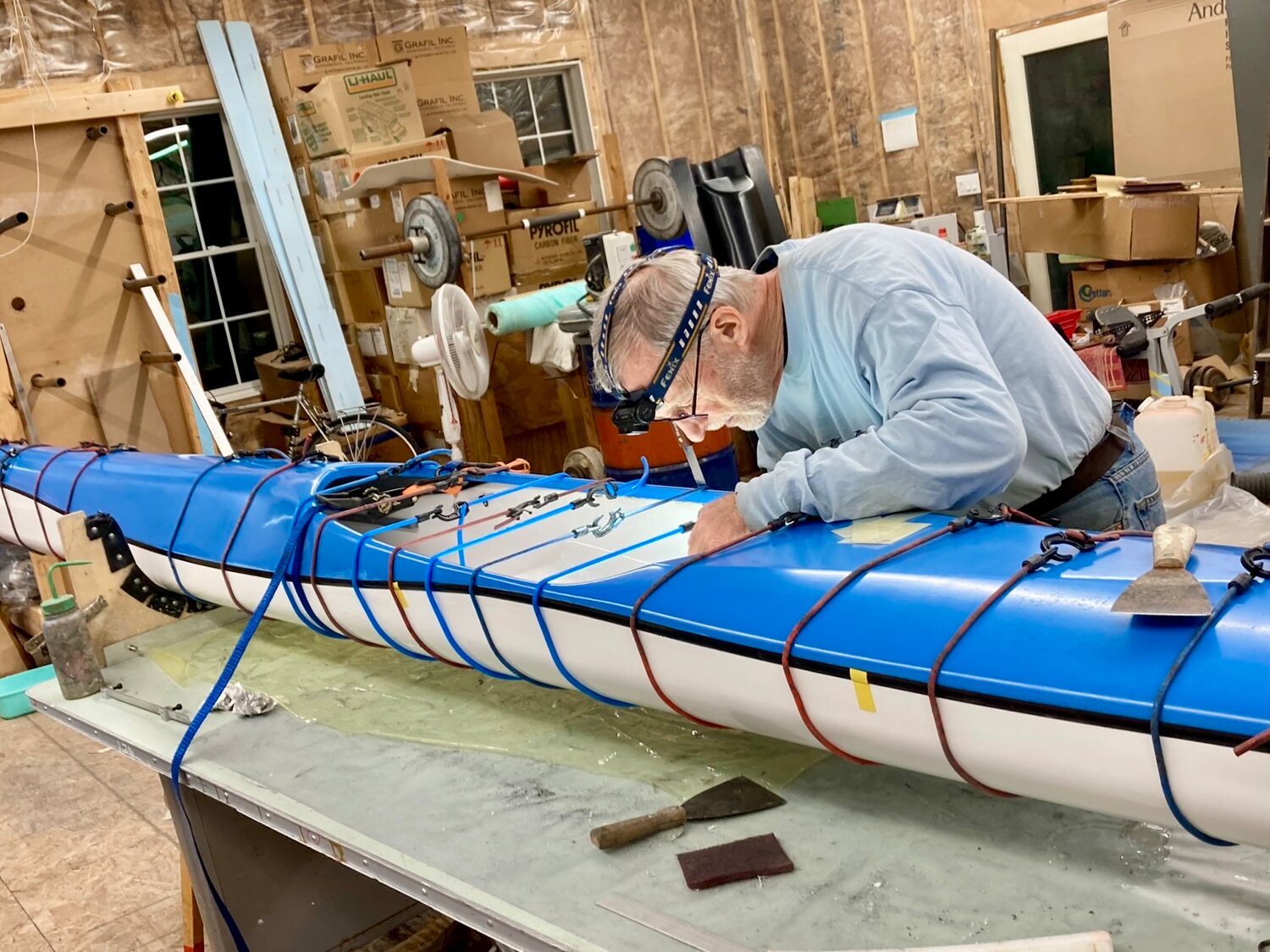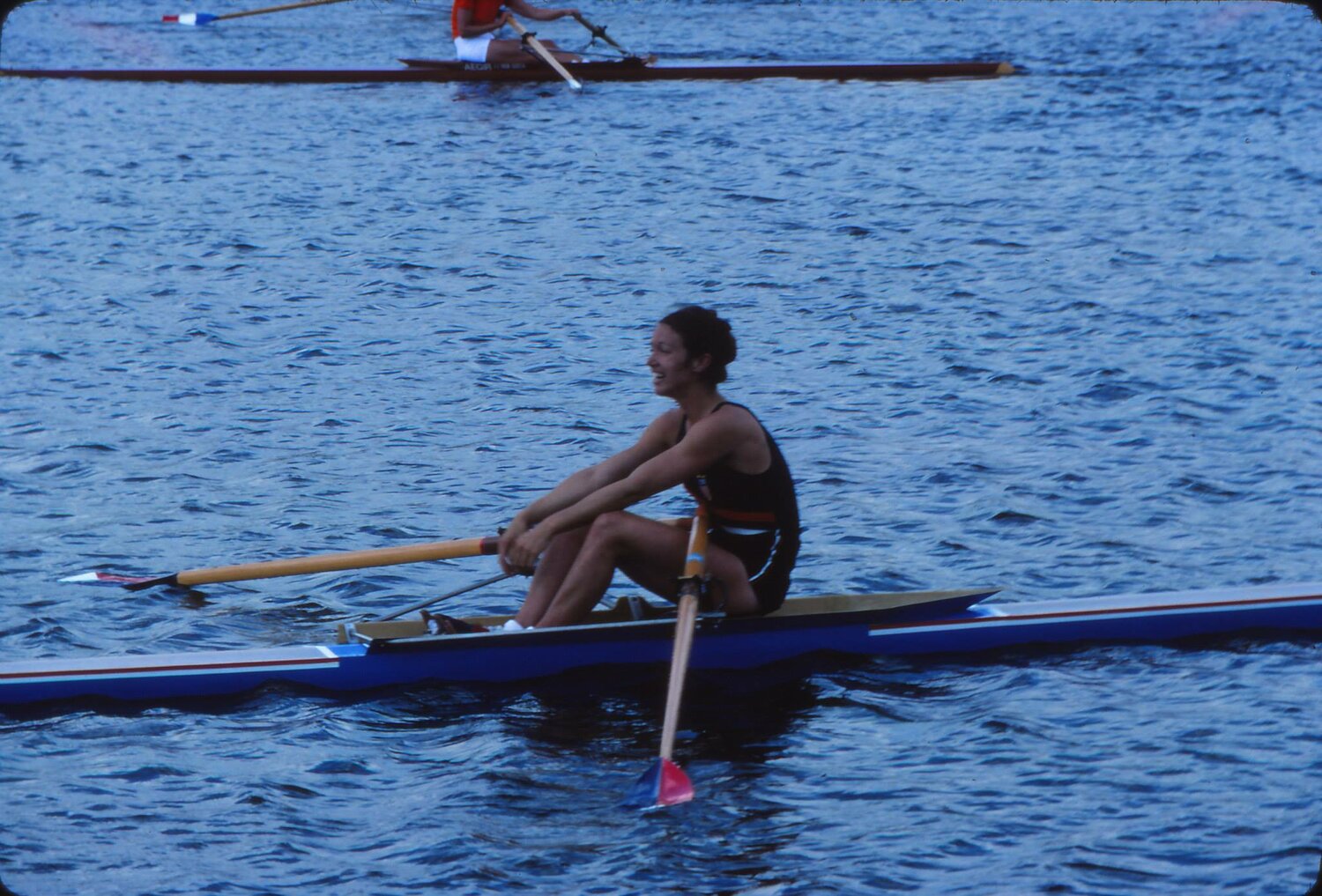Rowing royalty in Westport
Westport builder began shaping Olympic history half a century ago, and continues to innovate
It’s easy to miss. First you turn down a quiet side street about a mile or so north of Westport Point and then, a slight left onto a gravel road that heads into the woods. You know you’ve …
This item is available in full to subscribers.
Please log in to continue |
Register to post eventsIf you'd like to post an event to our calendar, you can create a free account by clicking here. Note that free accounts do not have access to our subscriber-only content. |
Day pass subscribers
Are you a day pass subscriber who needs to log in? Click here to continue.
Rowing royalty in Westport
Westport builder began shaping Olympic history half a century ago, and continues to innovate
It’s easy to miss. First you turn down a quiet side street about a mile or so north of Westport Point and then, a slight left onto a gravel road that heads into the woods. You know you’ve gotten to one of the epicenters of the ultra-competitive world of Olympic-level sculling when you spot the paddle, house number painted on the blade, that stands upright at the head of Ted Van Dusen and Annemoon van Erp’s driveway.
Though there are no signs pointing the way, the property is home to Van Dusen Racing Boats/Composite Engineering, a pioneer in carbon fiber racing shells that has more credits to its name than Ted can remember.
Based in Westport for about three years, the small company hand builds high tech composite racing boats — called shells in the racing community — that have become legend.
Joan Lind was aboard a Van Dusen shell when she won the first-ever American woman’s silver in sculling at the 1976 Olympics, finishing just three feet behind the German gold medal winner.
Her success, which came while Van Dusen was a doctoral student in ocean engineering at the University of Massachusetts, helped launch the company in October of that year. And from then through the 1988 games, there wasn’t a single American sculler who made the U.S. Rowing team without a Van Dusen shell.
For years Van Dusen ran his operation out of a comparatively large facility in Concord, Ma. But he and Annemoon moved to Westport amidst the pandemic, downsized considerably and now build their shells, and racing kayaks and other boats, one at a time in their small workshop. They also take on repair jobs — one in the shop recently had a large section of hull smashed out by a falling tree limb — and they’re always busy.
Though they don’t put out the number of shells they did when they had their large facility, Van Dusen shells and related rowing equipment are still in high demand, and continue to be raced by some of the elites of the racing world — Jamie Koven, a two-time Olympian, former world champion and nephew of Westporter and former New Bedford mayor John Bullard, owns one, as do countless others.
Building in the blood
Van Dusen is a slight, friendly man with a rower’s physique, and when he and van Erp are not working on boats, they can often be spotted sculling along the east branch of the Westport River.
Van Dusen loves to talk shop, and his conversations can ramble from the finer points of carbon fiber weaving, to mathematics, to the advantages and disadvantages of certain shapes when forming minute parts. In his world, fractions of a second and a millimeter or ounce here or there can spell the difference between gold and not making the team.
He grew up in the Boston area and learned about building and design from his grandfather, a noted woodworker from England who took a honeymoon trip to Boston as a young man and ended up staying.
As a kid he was drawn to the water, and to building and engineering. Looking up to his grandfather as a mentor, he had plenty of inspiration.
“I grew up around tools,” he said. “So I just started making stuff. I built a dory at 11 and by the time I got to the ninth grade, I built a Snipe-class sailboat.” He still owns that dory, and he and Annemoon recently put a fresh coat of paint on it.
As he moved from high school to the Webb Institute of Naval Architecture, on to MIT and finally UMass/Amherst, he was concurrently heavily involved in racing and sailing. His efforts to build stronger, faster and lighter grew naturally.
As he learned about and began experimenting with exotic composite materials like boron and carbon, he began incorporating them into the boats he was building, or imagining in his head.
But he was still a relative unknown when Lind, who rowed out of Long Beach, Ca., got ahold of one of his early shells during Olympic trials held in Hanover, N.H. in 1976.
Though it was a world apart from the wooden Japanese boat she was using, Lind was uncertain at first whether she’d bring the Van Dusen to the games in Montreal, the first ever to which women were invited to row. But after setting personal best times in a tailwind and on flat water, the Van Dusen got the call and the rest is history.
Over the coming years, Van Dusen would build boats for many of the racing world’s giants, and he has never stopped looking for ways to shave off time and weight, or to add weight where its presence was beneficial.
He is also a pioneer in other fields, including carbon wind turbine blades, but shells have always been his labor of love.
Though he and Annemoon spent most of their married life in the Boston area, they found Westport about six years ago and decided to come here to escape the traffic and headaches that come with living in a large city.
“It’s beautiful,” Annemoon said. “It’s unlike any other” village she’s seen in New England.
Van Dusen Racing Boats still sells as many shells in various sizes and configurations as it can build, and the couple continue to work with other builders to improve all manner of watercraft — currently, that includes a fleet of racing kayaks on which Van Dusen and a Warren, RI, builder are collaborating.
Looking back, it becomes apparent that to Van Dusen, the pursuit of better, faster and more efficient was always reward in itself. And though he invented many techniques and designed advanced features that are now commonplace in the racing world, he never patented some of his most innovative.
“No,” he said, explaining that every builder learns and benefits from those who came before, and denying advancements to others doesn’t necessarily appeal to him.
“It should be open,” he said of that knowledge. “You learn a little more with every one.”









